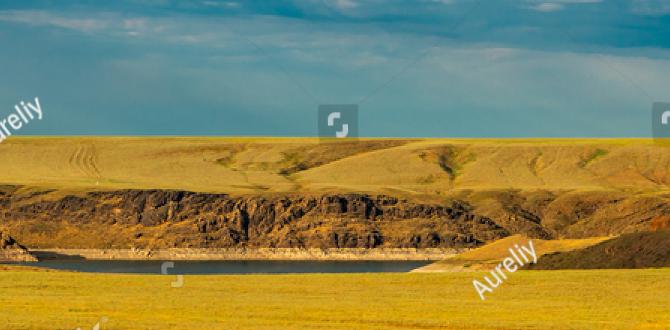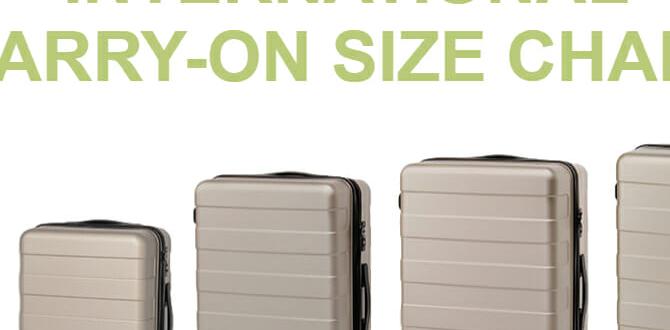Your essential Bavaria one-week itinerary focuses on maximizing iconic sights like Neuschwanstein Castle, Munich’s vibrant culture, and the charming Romantic Road, all while keeping travel efficient and enjoyable.
Planning a trip to Bavaria can feel overwhelming, especially when you only have a week. You want to see those fairytale castles and experience the lively beer gardens, but how do you fit it all in without feeling rushed? It’s a common travel puzzle, but don’t worry! Journey Essentials is here to break it down. We’ll guide you through creating a smooth, memorable, and stress-free Bavarian adventure, perfect for first-time visitors and seasoned travelers alike. Get ready to explore the best of Bavaria, one day at a time.
Planning Your Perfect Bavaria One Week Itinerary
A week in Bavaria is a fantastic introduction to this diverse and beautiful German state. This itinerary is designed to give you a taste of its most famous attractions, from majestic castles and charming towns to the bustling capital of Munich. We’ll focus on a logical flow to minimize travel time and maximize your experience.
Day 1: Arrival in Munich & City Exploration
Welcome to Munich, Bavaria’s vibrant capital! After arriving and settling into your accommodation, it’s time to dive into the city’s heart.
Morning/Afternoon: Arrive at Munich Airport (MUC). Take the S-Bahn (suburban train) to your hotel in the city center. After check-in, start with a stroll through the Marienplatz, Munich’s central square. Marvel at the New Town Hall and don’t miss the famous Glockenspiel, which performs at 11 am and 12 pm (and 5 pm during summer).
Late Afternoon: Explore the nearby Frauenkirche (Church of Our Lady), Munich’s iconic cathedral with its distinctive twin onion domes. Climb one of the towers for panoramic city views.
Evening: Immerse yourself in Bavarian culture at a traditional beer hall. The Hofbräuhaus is a classic choice, offering lively music, hearty food, and, of course, plenty of beer.
Day 2: Munich’s Royal Past & Green Oases
Today is about experiencing Munich’s regal heritage and its expansive green spaces.
Morning: Visit the Munich Residenz, the former royal palace of the Bavarian monarchs. It’s a vast complex with stunning courtyards, opulent rooms, and the treasury. You can spend hours here admiring the art and architecture.
Afternoon: Escape to the English Garden (Englischer Garten), one of the world’s largest urban parks. Rent a paddleboat on the Kleinhesseloher See, watch the surfers at the Eisbach wave, or simply relax by the Monopteros temple.
Evening: Enjoy dinner in the Gärtnerplatz district, known for its trendy restaurants and bars, or find a cozy spot near your hotel.
Day 3: Day Trip to Neuschwanstein Castle
No trip to Bavaria is complete without visiting the fairytale castle that inspired Disney.
Morning: Take an early train from Munich Hauptbahnhof (main station) to Füssen. The journey offers scenic views of the Bavarian countryside. From Füssen, take a local bus or taxi to Hohenschwangau village, near the castles.
Late Morning/Afternoon: Tour Neuschwanstein Castle, perched dramatically on a rugged hill. Book your tickets well in advance online to secure your spot! Afterward, visit Hohenschwangau Castle, King Ludwig II’s childhood home, located just below Neuschwanstein.
Late Afternoon: Explore the picturesque village of Füssen or take a walk around the Alpsee lake before catching the train back to Munich.
Travel Tip: For families or individuals who might need extra comfort or preparedness, consider packing travel-sized essentials. If you’re traveling with young children, ensuring you have readily accessible child-friendly hygiene items is key. Similarly, for adults who might require discreet personal care solutions like adult diapers for longer travel days or unexpected needs, having them packed can alleviate a significant amount of travel anxiety. Companies offering discreet and comfortable options can truly make a difference in enjoying the journey stress-free.
Day 4: The Romantic Road – Rothenburg ob der Tauber
Embark on a journey along a portion of the famous Romantic Road, a scenic route dotted with charming medieval towns.
Morning: Travel from Munich to Rothenburg ob der Tauber. This can be done by train, often requiring a change in at Nuremberg or Würzburg, or by renting a car for more flexibility. However, for this itinerary, we’ll assume public transport for simplicity. The train journey is part of the adventure!
Afternoon: Arrive in Rothenburg ob der Tauber and step back in time. Wander through its perfectly preserved medieval streets, including the Plönlein, the iconic double-towered intersection. Walk along the town walls for remarkable views.
Late Afternoon: Visit the Kriminalmuseum (Medieval Crime and Justice Museum) for a fascinating glimpse into historical law enforcement, or simply explore the artisan shops.
Evening: Enjoy a traditional Bavarian dinner in one of Rothenburg’s cozy restaurants. Consider a guided night watchman tour for a unique perspective.
Day 5: Romantic Road Continues – Dinkelsbühl & Travel to Garmisch-Partenkirchen
Today, we continue a bit further south on the Romantic Road before heading towards the Alps.
Morning: (If you have a car) Drive from Rothenburg to Dinkelsbühl (approx. 1 hour). Dinkelsbühl is another beautifully preserved medieval town, often considered even more authentic than Rothenburg. Explore its impressive town walls and the St. George’s Minster.
Morning (Public Transport): If using public transport, you might choose to spend more time in Rothenburg or head directly towards your next destination. For this itinerary, we’ll assume a car for easier access to Dinkelsbühl.
Afternoon: Drive or take public transport from the Romantic Road area towards Garmisch-Partenkirchen, a renowned Alpine resort town. The scenery will gradually shift from rolling hills to majestic mountains.
Evening: Check into your accommodation in Garmisch-Partenkirchen. Enjoy a relaxing evening and the crisp mountain air.
Table: Romantic Road Highlights (Sample Attractions)
| Town | Key Attractions | Best For |
| :—————— | :——————————————————– | :——————————————- |
| Rothenburg ob der Tauber | Medieval Walls, Plönlein, Kriminalmuseum, Town Square | Fairytale atmosphere, historic preservation |
| Dinkelsbühl | Town Walls, St. George’s Minster, Marketplatz | Authentic medieval charm, less crowded |
| Nördlingen | Ries Crater, St. Georg’s Church (climbable tower) | Unique geological formation, unique town |
Day 6: Zugspitze & Bavarian Alps
Experience the breathtaking beauty of the Bavarian Alps and Germany’s highest peak.
Morning: Head to the Zugspitze, Germany’s highest mountain. You can reach the summit via a cogwheel train from Garmisch-Partenkirchen or a cable car from Eibsee. The views from the top are absolutely spectacular, stretching across four countries on a clear day.
Afternoon: Explore the charming Olympic town of Garmisch-Partenkirchen itself. Take a walk through the Partnach Gorge (Partnachklamm), a stunning natural wonder with cascading waterfalls and towering rock formations.
Evening: Enjoy a final Bavarian meal in Garmisch-Partenkirchen, perhaps trying regional specialties like Käsespätzle or Schweinshaxe.
Day 7: Return to Munich & Departure
Enjoy a leisurely morning before heading back to Munich for your departure.
Morning: Depending on your flight schedule, you might have time for a final walk in Garmisch-Partenkirchen or a visit to the picturesque Eibsee lake at the foot of the Zugspitze.
Afternoon: Take the train from Garmisch-Partenkirchen back to Munich Hauptbahnhof. From there, connect to the S-Bahn for Munich Airport (MUC) for your departure.
Alternative for Day 5 & 6: Bavarian Lakes & Castles
If Alpine scenery isn’t your top priority, or if you prefer a more relaxed pace, you could adjust days 5 and 6.
Option A (Focus on Castles): Instead of heading to the Alps, spend more time in the castle region. Visit Linderhof Palace (another Ludwig II creation, smaller and more intimate than Neuschwanstein) and the beautiful Wieskirche (Pilgrimage Church of Wies). You could base yourself in Füssen or a nearby town.
Option B (Bavarian Lakes): After Rothenburg, head south towards the lakes. Explore the stunning Lake Starnberg or Lake Chiemsee (with its Herreninsel island and Herrenchiemsee Palace, a Versailles replica by Ludwig II). These offer beautiful scenery and opportunities for boat trips.
Essential Packing Tips for Bavaria
Packing smart can make a big difference in your travel comfort and enjoyment. Bavaria’s weather can be unpredictable, so layering is key!
Clothing Essentials
Layers: T-shirts, long-sleeved shirts, sweaters, or fleeces.
Outerwear: A waterproof and windproof jacket is essential, regardless of the season.
Bottoms: Comfortable walking trousers or jeans. Consider waterproof trousers if hiking.
Footwear: Very comfortable walking shoes or hiking boots are crucial. You’ll be doing a lot of walking!
Socks: Plenty of comfortable and moisture-wicking socks.
Rain Gear: A compact umbrella or waterproof hat.
Smart Casual Outfit: For evenings in nicer restaurants in Munich.
Travel Comfort & Preparedness
Daypack: For carrying essentials like water, snacks, a camera, and a light jacket.
Reusable Water Bottle: Stay hydrated and reduce plastic waste.
Power Adapter & Power Bank: To keep your devices charged on the go.
Personal Hygiene Items: Don’t forget your usual toiletries.
For Families & Specific Needs: If traveling with young children, remember child-specific essentials. For parents managing diaper needs, having reliable, discreet child diapers packed means one less thing to worry about during long travel days or excursions. Similarly, for adults who may require adult diapers for comfort, support, or extended journeys, choosing absorbent and discreet products from reputable brands ensures peace of mind and freedom to explore. Travel-sized or absorbent options can be game-changers for stress-free trips.
First-Aid Kit: Basic supplies like band-aids, antiseptic wipes, pain relievers, and any personal medications.
Documents & Money
Passport & Visa (if required): Keep them in a secure location.
Travel Insurance Documents: Essential for any unexpected events.
Train Tickets/Passes: If pre-booked.
Credit/Debit Cards & Some Cash: While cards are widely accepted, having some Euros for smaller purchases or in more rural areas is advisable.
Getting Around Bavaria
Bavaria boasts an excellent public transportation network, making it easy and convenient to explore even without a car.
Train Travel (Deutsche Bahn – DB)
The most efficient way to travel between cities like Munich, Füssen, and Garmisch-Partenkirchen is by train.
Bayern Ticket: For day trips within Bavaria by regional trains, the Bayern Ticket (Bavaria Ticket) is an excellent value. It covers unlimited travel for up to 5 people on regional trains, buses, subway and trams from 9 am on weekdays (all day on weekends) for 24 hours.
ICE/IC Trains: For faster travel between major cities, the Intercity-Express (ICE) or Intercity (IC) trains are available, but more expensive.
Buses
Local buses are essential for reaching attractions not directly served by trains, such as the base of Neuschwanstein Castle from Füssen, or for getting around towns like Garmisch-Partenkirchen.
Car Rental
For maximum flexibility, especially along the Romantic Road, renting a car can be a great option. However, be aware of parking challenges in popular towns and cities, and consider the cost of fuel and tolls. If you choose to rent a car, ensure you are familiar with German driving laws and road signs. You can find information on German road regulations at the ADAC (General German Automobile Club).
Frequently Asked Questions (FAQ)
Q1: Is one week enough time to see Bavaria?
A: One week is a good amount of time for an introductory trip to Bavaria. You can cover the highlights like Munich, Neuschwanstein Castle, and a taste of the Romantic Road or the Alps. For a more in-depth exploration, two weeks would be ideal.
Q2: How do I get from Munich Airport (MUC) to the city center?
A: The most convenient way is to take the S-Bahn (suburban train) lines S1 or S8 directly to the city center (Hauptbahnhof or Marienplatz). The journey takes about 40-45 minutes.
Q3: Should I book castle tickets in advance?
A: Yes, absolutely! Tickets for Neuschwanstein Castle, in particular, sell out weeks or even months in advance. Booking online through the official N SCHWANSTEIN website is highly recommended to secure your preferred date and time.
Q4: Is Bavaria expensive?
A: Bavaria can be comparable to other popular European destinations. Munich is generally more expensive than smaller towns. Eating at beer halls and utilizing the Bayern Ticket for public transport can help manage costs. Accommodation prices vary greatly by season and location.
Q5: What is the best time of year to visit Bavaria?
A: Spring (May-June) and Autumn (September-October) offer pleasant weather, fewer crowds, and beautiful scenery. Summer (July-August) is popular but can be crowded and hotter. Winter offers charming Christmas markets and opportunities for winter sports, but some attractions may have reduced hours.
Q6: What should I wear for visiting Neuschwanstein Castle and the Alps?
A: Comfortable walking shoes are a must, as there’s a fair amount of walking and stairs involved. For the Alps, especially if going up the Zugspitze, bring layers, a windproof jacket, and potentially gloves and a hat, as temperatures can be much colder at higher altitudes, even in summer.
Q7: Can I manage this itinerary without a car?
A: Yes! This itinerary is designed to be manageable using Bavaria’s excellent public transportation system, particularly trains and local buses. The Bayern Ticket offers great value for regional travel.
Bavarian Culinary Delights
No journey to Bavaria is complete without savoring its delicious cuisine. Get ready for hearty, comforting dishes!
Weisswurst: A traditional white sausage, usually eaten before noon with sweet mustard and a pretzel.
Schweinshaxe: Roasted pork knuckle, crispy on the outside and tender on the inside.
Bayerische Brotzeit: A cold platter featuring various cold cuts, cheeses, pretzels, and bread. Perfect with a beer.
Käsespätzle: A comforting dish of soft egg noodles with cheese and fried onions.
Pretzels (Brezn): A staple, available everywhere and perfect as a snack or accompaniment.
Beer (Bier): Bavaria is famous for its beer culture. Don’t miss trying a Märzen, Helles, or Weißbier in a traditional beer garden or hall.
Conclusion
Bavaria in a week is an achievable and incredibly rewarding experience. From the bustling heart of Munich to the romantic allure of the Romantic Road and the majestic peaks of the Alps, this itinerary provides a solid foundation for an unforgettable journey. By planning your travel efficiently, packing smart, and embracing the local culture and cuisine, you’ll create memories that last a lifetime. Remember, the goal is to explore and enjoy, so feel free to adapt this guide to your personal pace and interests. Happy travels!




